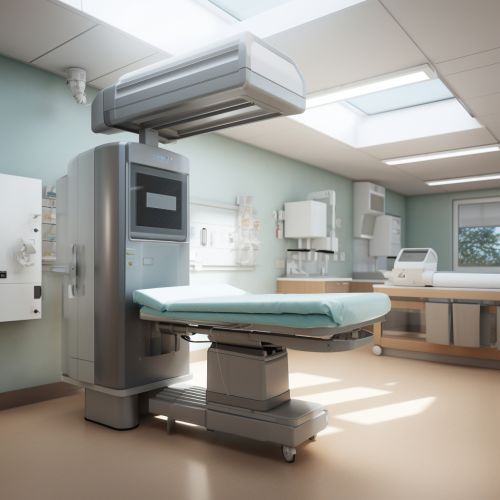X-ray
Introduction
X-rays are a form of electromagnetic radiation with wavelengths ranging from about 10 nanometers to 10 picometers. They are classified as ionizing radiation due to their high energy, which allows them to penetrate various materials, including body tissues. This property makes X-rays useful in a wide range of applications, from medical imaging to industrial inspection and security screening.


Discovery and Early Research
The discovery of X-rays is attributed to Röntgen, a German physicist, in 1895. He noticed that a fluorescent screen in his lab started to glow even when it was placed in a dark room away from the cathode ray tube he was working with. Röntgen named these unknown rays "X-rays", using 'X' to denote something unknown. His discovery revolutionized the fields of medicine and physics, and he was awarded the first Nobel Prize in Physics in 1901.
Physical Properties
X-rays are characterized by their high energy and short wavelength, which enable them to penetrate various types of materials. The energy of an X-ray photon is directly proportional to its frequency and inversely proportional to its wavelength. This relationship is described by Planck's equation: E = hf, where E is the energy, h is Planck's constant, and f is the frequency of the X-ray.
Production
X-rays are produced in X-ray tubes by a process called X-ray generation. This involves accelerating electrons to high speeds and then suddenly decelerating them upon impact with a metal target, typically tungsten. The sudden deceleration causes the electrons to emit X-rays, a process known as Bremsstrahlung or "braking radiation".
Applications
Medical Imaging
One of the most common uses of X-rays is in medical imaging, where they are used to visualize the internal structures of the body. This can include imaging of the bones, lungs, heart, and other organs. X-rays are also used in computed tomography (CT) scans, which provide more detailed images of the body's internal structures.
Industrial Applications
In industry, X-rays are used for a variety of purposes, including nondestructive testing of materials and structures, and in X-ray crystallography for determining the atomic and molecular structure of crystals.
Security Screening
X-rays are also used in security screening at airports and other secure facilities. They are used to inspect luggage and cargo for contraband items, such as weapons and explosives.
Safety and Health Effects
Exposure to X-rays can have harmful effects on living tissues, leading to cell damage and an increased risk of cancer. Therefore, precautions must be taken to minimize exposure, especially in medical and industrial settings. These precautions can include the use of lead shielding and limiting the duration of exposure.
